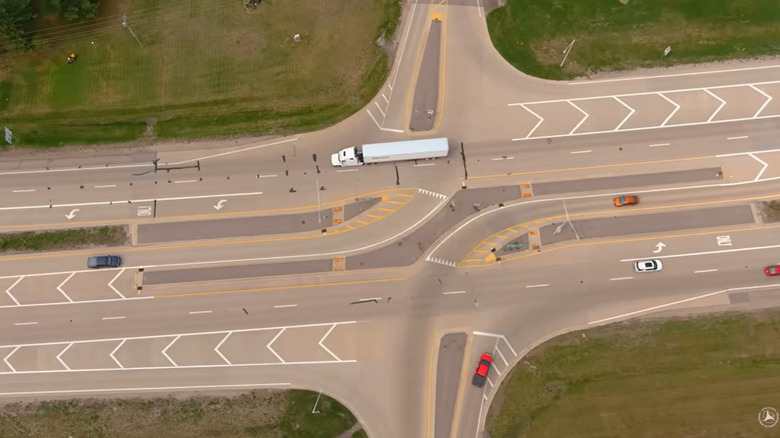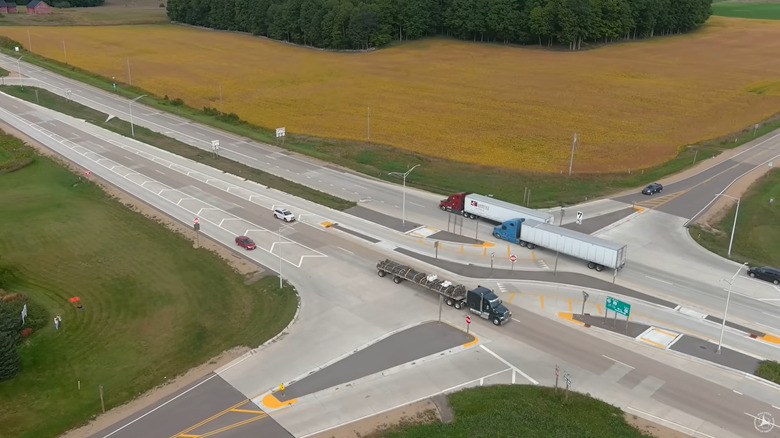This Trendy Intersection System Is Taking Over American Roads. Here's What You Need To Know
Getting on or off a four-lane highway is about to become a lot safer in many parts of the United States thanks to an innovative intersection design. Restricted Crossing U-turn intersections (RCUTs) are becoming increasingly popular in many states to cut down on accidents that occur when drivers from side streets turn left to merge onto a four-lane highway. Also known as a J-turn or superstreet, the U.S. Department of Transportation (DOT) estimates that they reduce fatal and injury-inducing crashes at unmarked intersections by 63%.
So, how do they work? Typically, when a secondary road encounters a four-lane highway, traffic is immediately directed to turn right. Then, a little further along there is a U-turn area that allows vehicles to switch directions. By avoiding dangerous left turns (like UPS drivers do in unfamiliar cities) and through movements across several lanes of traffic, the number of conflict points where crashes can occur drops significantly from 32 to just 14.
With an increase in road trips across the United States, this is great news. But if you haven't encountered an RCUT yet, there's a good reason why. Though the design was introduced in the 1980s, DOT estimates that only 43% of states are using this type of intersection. Based on 2020 numbers published by ResearchGate, you're most likely to come across an RCUT while traveling in North Carolina, which has over 100, or Georgia, which has a little over 20.
The advantages and disadvantages of RCUTs for drivers
To truly understand what sort of impact good design can have on your safety, it's worth looking at a case study published by DOT about a series of six RCUTs placed along a rural highway in Maryland. Installed along U.S. Route 15 between the town of Emmitsburg and the award-winning food and art city of Frederick in 2009, they decreased fatal crashes by 40% and car accidents causing injury by 70%. Those statistics would be impressive on their own, but safety isn't the only benefit to an RCUT.
The design actually allows traffic to flow more efficiently, even though cars entering the intersection have to drive farther to move in their desired direction. Much of this is due to the fact that RCUTs, by their very nature, require less wait time. In a traditional X-intersection, drivers have a lot of downtime as they wait for the traffic lights to cycle through and give all lanes the opportunity to pass. But with this design, fewer light changes are necessary, and that keeps people moving quickly.
Those impressive statistics might have you wondering why more states aren't implementing this lifesaving type of intersection. Perhaps the most important reason is the space that it requires. Due to the specific nature of the design, which is quite wide in order to accommodate the large turning radius of trucks. Another concern is also pedestrian traffic, as this type of intersection is longer and cumbersome to cross on foot. However, those issues aside, when balanced with the benefits, it means that drivers should get ready to see more of these innovative intersections during their next scenic road trip.

